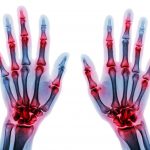
Challenge: A patient with Multiple Sclerosis (MS) and active periodontal disease, most recently was diagnosed with Type II diabetes, will receive periodontal therapy. Currently, proper home care is limited to the physical difficulties of MS.
Background: A 58-year-old female presented on 4/17/2018 with a chief complaint of xerostomia and physical difficulties challenging a proper home care regimen. Due to living with MS for several years, the patient has partial left-side paralysis result...
Read More









